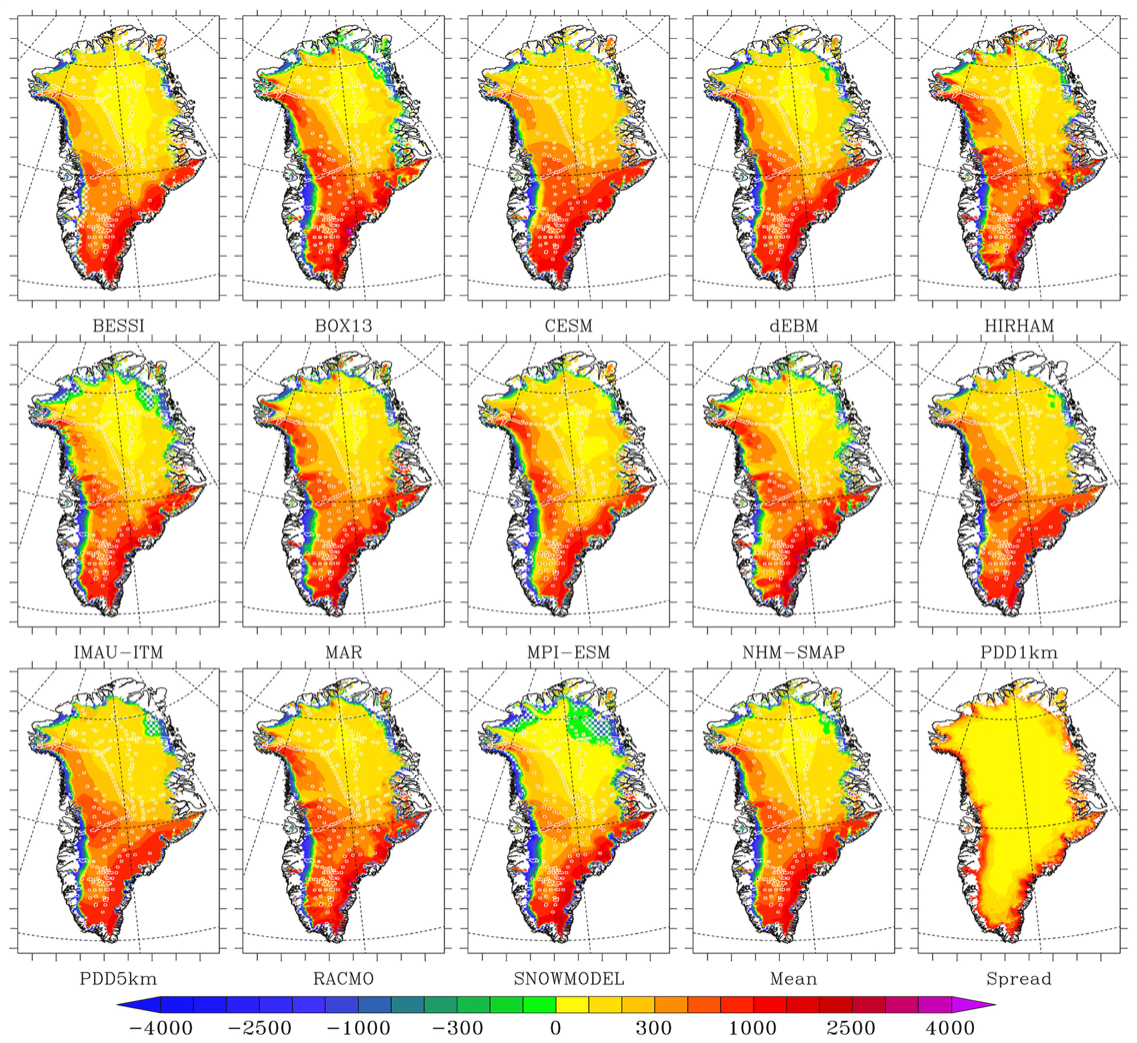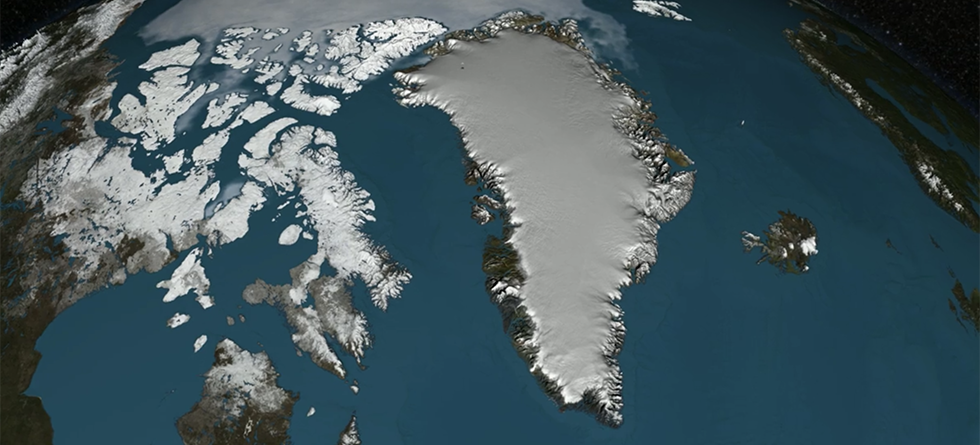Written by Heiko Goelzer from the Bjerknes Centre and NORCE, and Andreas Born from the Bjerknes Centre and the Department of Earth Science at the University of Bergen.
An accurate projection of the sea-level contribution from the Greenland ice sheet hinges on a good representation of the mass budget at the surface, the surface mass balance. Our new paper evaluates and compares simulated Greenland ice sheet surface mass balance from 13 different models of various complexity over the historical period.
While the most complex and computationally expensive models show the best results, the simpler and faster models also compare fairly well with observations and have biases of similar magnitude. Discrepancies in the mass trend over the period 2000–2012 between the models, however, suggest large uncertainties due to meltwater runoff biases in the modelled SMB that may carry over to future projections.
The paper presents results of an international intercomparison exercise of different surface mass balance models for the Greenland ice sheet, led by researchers from Liege, Belgium. Among the participating models are contributions from the Bjerknes Centre scientists Heiko Goelzer (NORCE), Andreas Born (UiB), Tobias Zolles (UiB) and Sebastian Mernild (NERSC), representing three different energy-balance approaches in the mix of models. These models do not explicitly simulate atmospheric dynamics and are therefore computationally efficient enough for ice sheet simulations of several tens to hundreds of thousands of years.

Over the historical period, the models are evaluated compared to data from field campaigns, automatic weather stations and satellite observations that represent a ground truth to compare to. The simulation period (1980-–2012) can roughly be separated into a first part with a Greenland ice sheet in near balance with the climate, and a second part with accelerating mass losses (2000–2012).
Model performance in these experiments, in particular in the second part, is an important measure to gauge the reliability of models. This is crucial, given that the same models are routinely used in various studies to project ice sheet changes with important implications on our understanding of the future sea-level contribution of the GrIS.
Reference
Fettweis, X., Hofer, S., Krebs-Kanzow, U., Amory, C., Aoki, T., Berends, C. J., Born, A., Box, J. E., Delhasse, A., Fujita, K., Gierz, P., Goelzer, H., Hanna, E., Hashimoto, A., Huybrechts, P., Kapsch, M.-L., King, M. D., Kittel, C., Lang, C., Langen, P. L., Lenaerts, J. T. M., Liston, G. E., Lohmann, G., Mernild, S. H., Mikolajewicz, U., Modali, K., Mottram, R. H., Niwano, M., Noël, B., Ryan, J. C., Smith, A., Streffing, J., Tedesco, M., van de Berg, W. J., van den Broeke, M., van de Wal, R. S. W., van Kampenhout, L., Wilton, D., Wouters, B., Ziemen, F., and Zolles, T.: GrSMBMIP: intercomparison of the modelled 1980–2012 surface mass balance over the Greenland Ice Sheet, The Cryosphere, 14, 3935–3958, https://doi.org/10.5194/tc-14-3935-2020, 2020.

